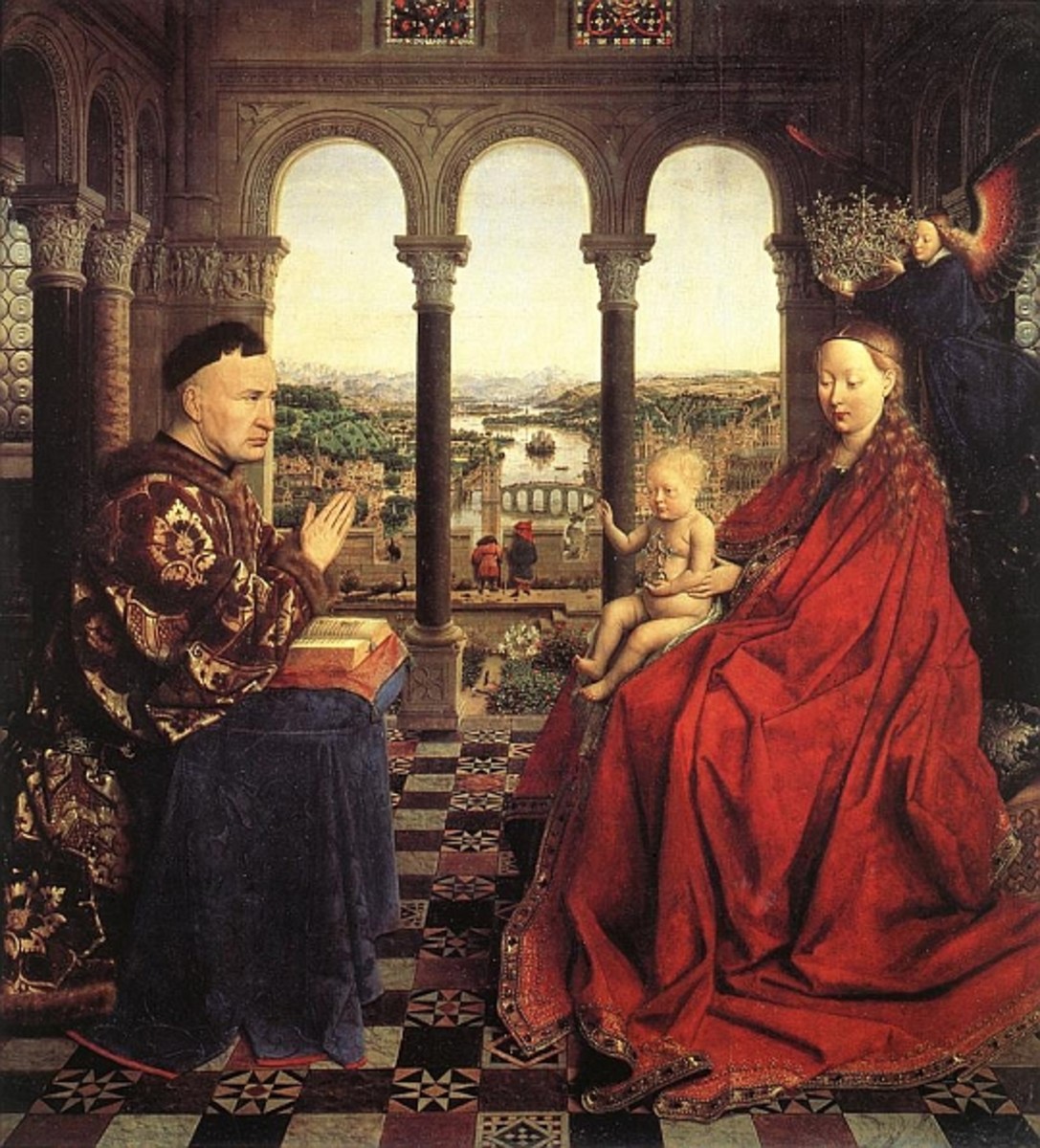A Phenologist Celebration
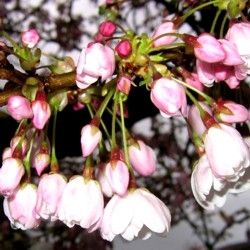
Practice Phenology
February 1st, I have always felt, is the true start of the new year.
I have already observed the swelling of cherry buds, they are like unpopped popcorn, just displaying a thin seam of pink.
In the photo displayed here, you will notice how these little buds developed into beautiful blossoms.
In lower areas of the valley the green shoots of daffodils are about two to three inches tall. I'll have to measure them more exactly, I think, to be considered a good phenologist.
I hope that this lens will encourage you to practice phenology. That's the science of tracking seasonal changes in the natural world.
A Blessing:
May new growth appear
in your life
this spring.
Recording a unique seasonal event - Natural Phenomena
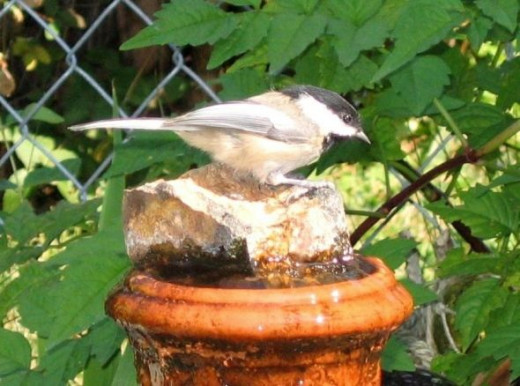
Spring arrives in the Midwest as an explosion of flowers around Spring Equinox, or so I've heard. I've always thought it crept up on us, here in the Midnorth, with that first scent of Sweet Box and Daphne odora in January, followed by Snowdrops slowly unfurling in February, then daffodils in March, tulips in April, and so forth. But this year, this week, it feels like spring is exploding. I keep stopping on my walks, struck by the wonder of a shrub flush with green buds, where just yesterday there were only bare twigs. I'm sure people wonder what is wrong with me, but it's just that I've become a phenologist. That's been my self-appointed task for February.
Phenologists note and record the date of unique seasonal events: first snow that stays on the ground, ice breaking upon a lake, sightings of migratory birds, the appearance of buds and then blooms on particular plants. Birders have lifetime lists of birds sighted. Phenologists maintain charts showing the dates of the same events, year after year, so they can identify patterns and say things like "the lilacs are blooming two weeks earlier this year."
The challenge begins - My first sightings ~ February 1st
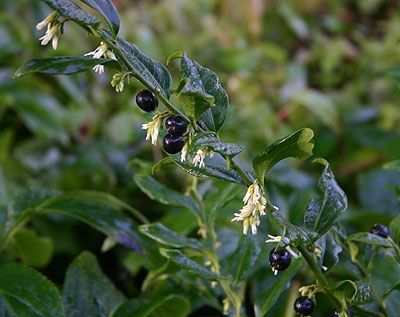
Sweet Box - Sarcococca confusa
Family: Buxaceae Sarcococca confusa
SWEET BOX Family: Buxaceae
Pronounced: sar-ko-KOAK-ah kon-FU-sa
I love to pronounce the name of this genus - Sarcococca. It's one of those words that bounces around the mouth and quickly slips out like a giggle .. sar-ko-KOAK-ah. Sometimes I wish we had more words like this, but I would be too busy playing with them and not getting my work done.
The best part about growing Sarcococca is that it blooms in winter, and when you walk by, the fragrance gives a knock on the olfactory nerve. It makes you want to breathe in deep the wonderful scent. The first time I smelled it, I was at the Vandusen Botanical Garden in Vancouver, B.C.. The fragrance caught my attention, and I went in search of what flower was giving itself away in the middle of winter. To my surprise, it was a very small, almost inconspicuous white flower on a Sweet box shrub. The glossy black berries caught my eye also. I had to have this wonderful fragrance to brighten my winter. Therefore, it came to pass, the shrubs came to live in my yard. Every winter it reminds me what a joy it is for my nose to have this shrub.
Introduced to cultivation in 1916, it is believed the species comes from China where seed was collected in 1908.
Its common name, Sweet box, may have been received because it's in the boxwood family. At least Sarcococca does not have the smell of dirty sweat socks when it gets wet, unlike its cousins, the boxwoods. Sarcococca confusa has more fragrance than another Sarcococca species.
As a new fledgling phenologist the following are the things that should be recorded:
Plant Group:
Shrubs.
Mature size:
Height 3-5 feet (1-1.5 m).
Width: 3 feet (1 m).
First Leaf: January 15, 2012
Alternate, elliptic, surface undulating, glossy, green, evergreen leaves.
First Bloom: February 9, 2012
January-March, sometimes as early as December.
Clusters of five, small, white, very fragrant flowers
First Ripe Berry: July 1, 2012
Light:
Deep or partial shade.
Soil:
Humus rich, fertile, moist, well-drained soil.
Feeding:
Side dress with compost or manure. Fertilize in spring with a complete organic fertilizer.
Propagation Methods:
Sow seed into containers in spring or autumn and place in cold frame.
Cuttings in summer.
Pruning Methods:
During mid-spring prune dead or damaged branches. Prune for symmetry after flowering.
Pests and Diseases:
No problems to speak of.
Phenological Proverb:
When the sloe tree is white as a sheet, sow your barley whether it be dry or wet
The First Buttercup - Record it ~ March 10th
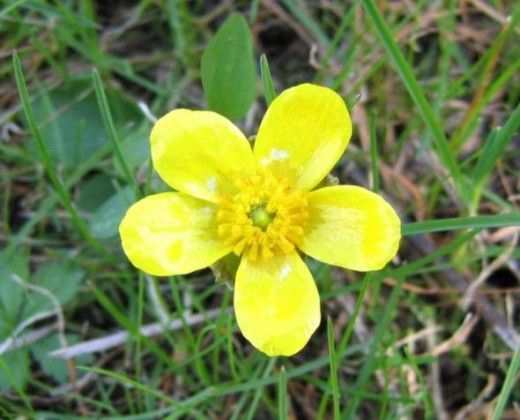
Gardeners, of course, have been phenologists for centuries, carefully noting dates of first and last frost and that particular moment in early spring when a piece of dirt pried from the ground retains its shape when squeezed in the hand, indicating that the soil is ready for planting.
My parents used the calendar to note these changes. They kept the calendars so that they could look back to see when the field was free of snow, saw their first crocus or their first robin in the springtime of past years. I recently inherited those calendars and I find it to be very interesting reading.
Ahhh, the daffodils are blooming in my garden. - April 16th
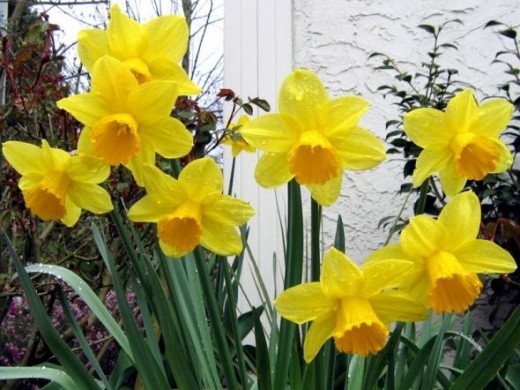
I love it when these sunny visions of loveliness appear. The light breeze coming down the mountain makes them nod their heads as if saying, "Yes, it's springtime, my dear." It makes me happy to see them.
Lilacs - Blooming profusely ~ May 16th
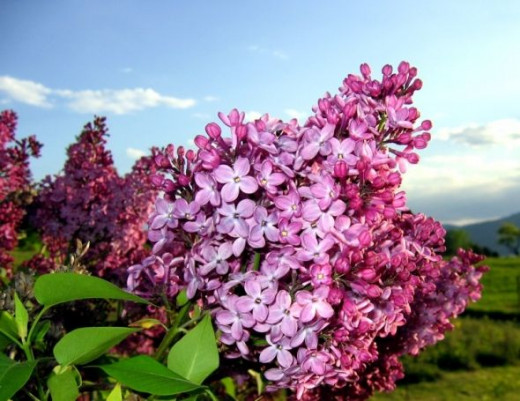
The wind is tossing the lilacs,
The new leaves laugh in the sun,
And the petals fall on the orchard wall,
But for me the spring is done.
Beneath the apple blossoms
I go a wintry way,
For love that smiled in April
Is false to me in May.
~ Sara Teasdale, May
The First Baby Robin - Recorded it ~ June 3rd
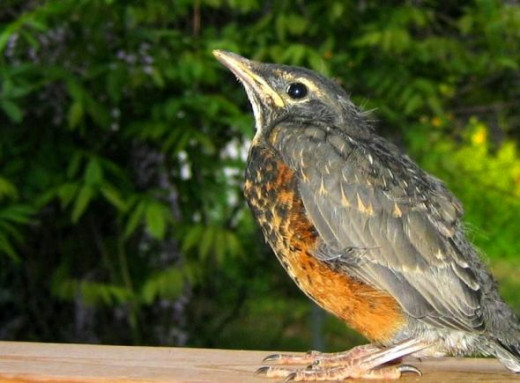
I've noticed that June is a prime time for the baby sparrows to leave their nests. Every June I record incidents of dive-bombing parents, young birds hunched over in inappropriate places (like on the railing of my deck or the roof of a parked car) and much scolding by parents trying to coax them out of danger. This is a time for me to take note of the date and time of these special occasions.
Maybe you are a phenologist and have been for a long time but just didn't know it! I know that my husband is one. The first frost he marks on the calendar, the first snowfall he marks on the calendar, the first robin, buttercup and so on.
Phenological Proverb:
If oak's before ash, you're in for a splash. If ash before oak, you're in for a soak.
It's not always easy .. - Theories get in the way.
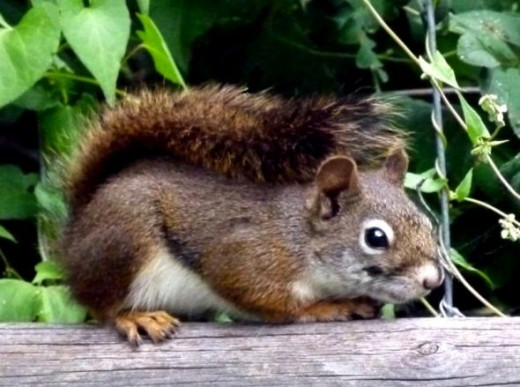
Phenologists don't have an easy job. It is not always easy figuring out what's a unique sign of the season. For example, it is a theory of mine that the squirrels in my neighborhood are more active in autumn but if I simply record the number of squirrels seen per day I might only be capturing the results of a squirrel population explosion or the effects of a temperature change.
Some unique markers that phenologists have studied: First leaf, first bloom, ripe berries, first appearance of insects, birds, and frogspawn, and first cutting of lawns. Autumn markers for trees include first tint, full tint, leaf fall and bare. To help people making these observations, phenologists have created specific descriptions of these events, for instance, first leaf is defined as the date when the widest part of the newly emerging leaf has grown beyond the ends of its opening winter bud scales. First bloom (for most flowers) occurs when the petals are open enough so you can see the stamens. Berries are ripe when they are soft to the touch or beginning to drop.
All about Phenology - These books will be helpful.
Summer
Summer and afternoon; to me those have always been the two most beautiful words in the English language.
~ Henry James
An early summertime scene - Our pasture ~ June 23rd
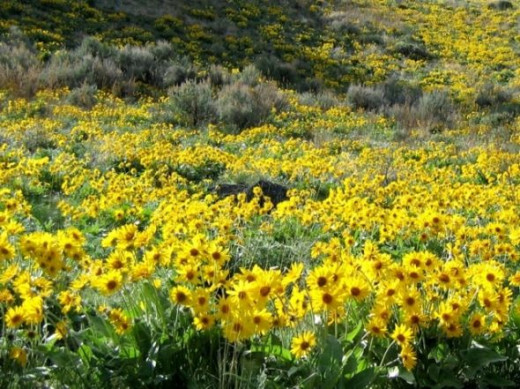
I know that summer is near when the sunflowers cover the hills around our home.This spring we had an unusual amount of rain so the sunflowers, the lupins with their tall spikes of flowers and other alpine flowers lasted a long time, in fact, until now. I was in my glory!
Late summer brings long dry grasses.
Mid Summer - July 18th
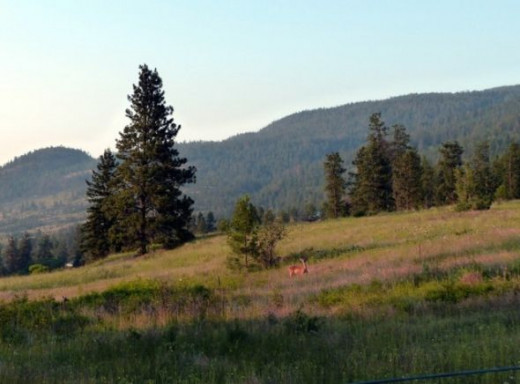
Deer enjoying the pasture grasses. There are actually two deer in this picture. Can you find the second one?
Deer Hiding - See her?
The deer that you can see clearly is a buck. The doe is hidden by tall grasses further down the hill. All you can see is her head in profile.
Did you find her?
Late Summer - September 15th
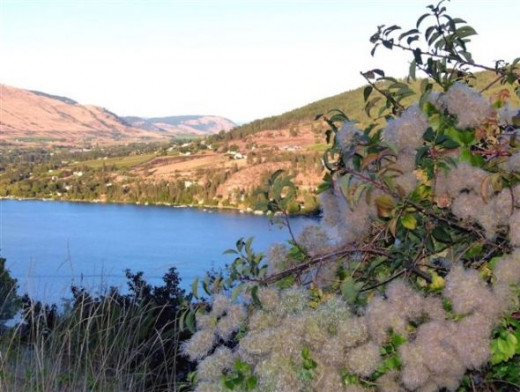
Many of our Okanagan hills are burnt brown by the hot sun this summer. Tall summer grasses and trees sow their seeds.
Autumn
Autumn is a second spring when every leaf is a flower.
~ Albert Camus
September 22, 2012 - First Day of Autumn
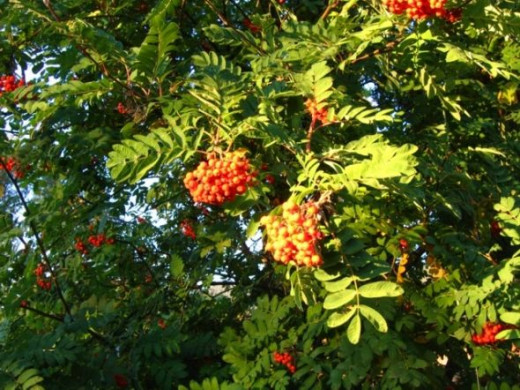
With the fall temperatures the robins have returned from the North to devour the berries on our Mountain Ash. Flocks of Robins!
Inspirational Quote:
There are only two ways
to live your life,
as though nothing is a miracle,
or as though everything is a miracle.
- Albert Einstein
Find a secret spot. - Sit quietly and observe.
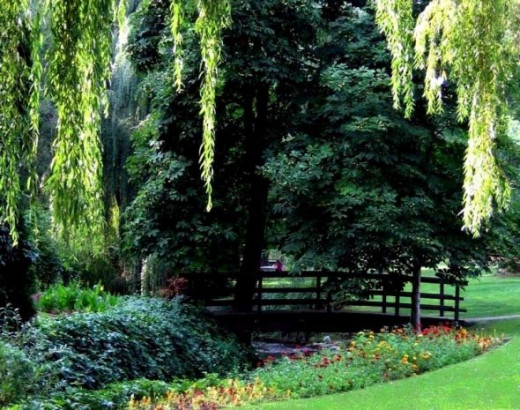
Natural phenomena is abundant, therefore phenologists often focus on a particular area. In fact, the first assignment given in most wilderness awareness programs you are asked to locate a "secret spot," a place where you can sit quietly in nature for at least 15 minutes a day to watch what unfolds around you.
I decided to focus on my back yard since I walk around it at least once a day with Bella Blue, my Minature Australian (Blue Merle) Sheep Dog. I purchased a journal and started writing down my observations. My first observation in every year usually occurs on the day I smell the first scent of spring. It's a particular fragrance that I noted for years before I finally identified it as the flower of sarcococcus humilis, or sweet box. (See in picture above.) Since then I've caught my first whiff of the scent of spring on January 22nd in both 2004 and 2007, while it was January 30th in 2006 and February 1st this year.
Bella Blue - Resting while I discover more firsts.
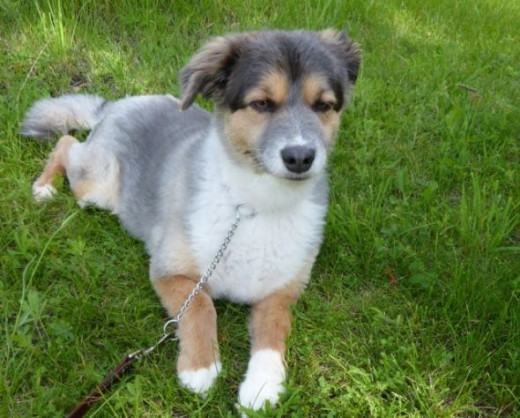
Use a daily planner .. - To record nature
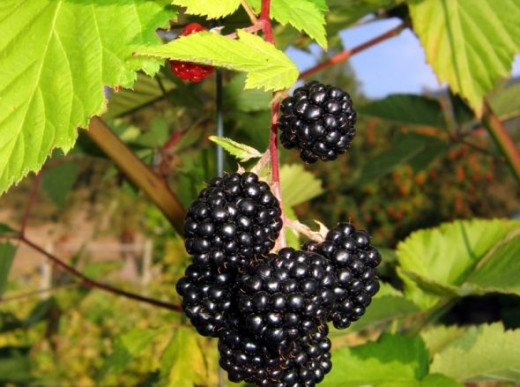
Observations may become a routine and easily incorporated into your journal or daily planner. It would be fun at the end of the year to find among your appointments, phone numbers and to-do lists, a note that says "ripe berries on the blackberry bushes" or "baby skunks sited while on my walk today."
Take your pick of a Daily Planner - There are many to choose from.
Make sure you have enough room each to write what you want to record.
If you don't see a Daily Planner that you like here there are many others to choose from. Just click on one of these and it will take you to many more.
The many benefits of phenology - Record, record, record
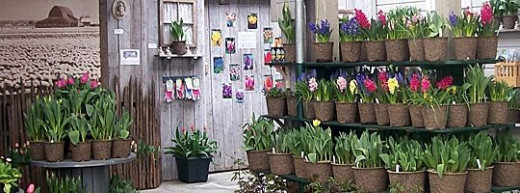
Benefits of phenology are many, besides the simple pleasure of living more closely attuned to the natural world. Phenologists in Great Britain can demonstrate that spring is arriving earlier every year, probably the effect of global warming. Last year's spring was one of the earliest on record.
Phenology helps birders, farmers, gardeners and others by correlating natural events. Farmers know to plant peas when the daffodils bloom or corn when the apple blossoms fall. Gregory Scott in his article on phenology, says morel mushroom hunters in north central Wisconsin know when developing oak leaves are the size of a squirrel's ear, they'll be able to find morels.
"Many of the events of the annual cycle recur year after year in a regular order. A year-to-year record of this order is a record of the rates at which solar energy flows to and through living things. They are the arteries of the land. By tracing their responses to the sun, phenology may eventually shed some light on that ultimate enigma, the land's inner workings."
- Aldo Leopold, A Phenological Record for Sauk and Dane Counties, Wisconsin, 1935-1945 (1947)
Resources: - Phenology Links

A phenology network in Great Britain coordinated by the Woodland Trust and Centre for Ecology and Hydrology which encourages readers in the British Isles to sign up as recorders and send in their observations. The "live" maps show the pattern of current sightings. I notice that no snowdrops have bloomed as of 2/5/2012 while last year the first snowdrop appeared on January 18, 2011 in Wales. I guess, according to a true definition of bloom, my snowdrops have not yet bloomed either, since you can't see the stamens of the flowers.
www.phenology.org.uk
A fabulous list of links compiled by Steve Diver for the Appropriate Technology Transfer for Rural Areas, National Sustainable Agriculture Information Service, including links to regional lists of plants in bloom, appearance of insects and birds, plus a link to all the other resources I've listed, including activities for kids and articles, columns and radio shows.
http://attra.ncat.org/attra-pub/phenology.html
Scott, Gregory, "A Time For Every Purpose Under Heaven," originally published April 1995, in Wisconsin Natural Resources
www.wnrmag.com/misc/pheno.htm
A wonderful article about the records kept since the 11th century of the blossoming of cherry trees in Kyoto and how they helped scientists chart average temperatures, plus a charming sidebar on one family's personal relationship to the blossoming of the cherry trees. The range of flowering has shifted over the centuries and ranges from late March to early May.
http://arnoldia.arboretum.harvard.edu/pdf/articles/1893.pdf
For more on cherry blossoms and festivals, read the comprehensive article on cherry blossoms at the World Kigo (Kigo are the seasonal words that appear in traditional Japanese haiku poems) web site:
http://worldkigodatabase.blogspot.com/2005/03/cherry-blossoms-sakura.html
A project which collects information on the first leaves and blossoms of over 58 plant species. You can print a plant list for your area and submit your data. I will contribute this year.
http://www.windows.ucar.edu/citizen_science/budburst/

Photo Credit:
Thank you Will.
Will has generously supplied all of the photos for this lens. If you haven't already taken in the plethora of beautiful photos and inspiring digital artwork of this artist, I encourage you to do so.
View Will's work at:
New art is being added daily.
Slow Time - Recovering the Natural Rhythm of Life - By Waverly Fitzgerald
The best parts of the book for me are the chapters Waverly Fitzgerald dedicates to the seasons. Here the pleasure of reading about spring, summer, autumn and winter and finding ways to use what is naturally happening in the world as a guide, are easy and the most poetic.

Photo Credit: Aegolius via Photobucket





